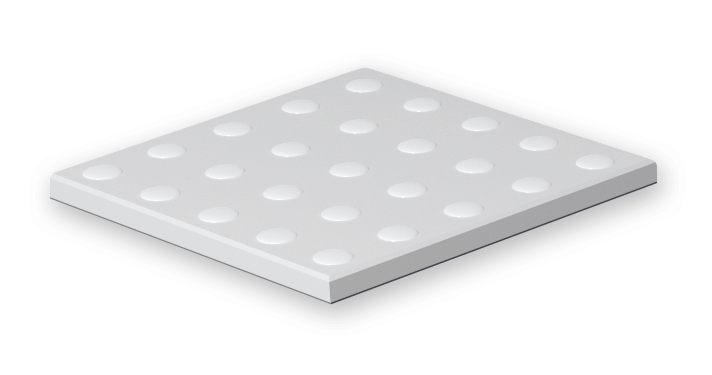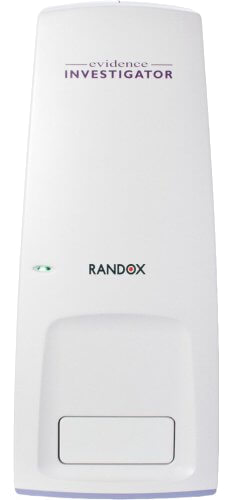Solutions
keyboard_arrow_downServices
keyboard_arrow_downSupport & Resources
keyboard_arrow_downCompany
keyboard_arrow_downContact
Get in touch to discover more
To find out more about the Chronic Lung Infection, enquire now.
Multiplex Detection of Chronic Lung Disease from a Single Sample
pulmonology The Randox CLD array includes a MecA antibiotic resistance marker to assist antibiotic stewardship
pulmonology Applying sputum culture to pursue the identity of the infectious agent
pulmonology Multiplex testing enables the detection of 131 species associated with long-term lung disease
pulmonology Identifies the risk of CLD development to support the eradication of infectious organisms
pulmonology Provides information on the phenotype and prognosis which cannot be identified through traditional spirometry testing
pulmonology Utilising patented Biochip Technology to simultaneously detect 31 markers from a single sputum sample
Chronic Lung Disease (CLD) are diseases of the airways and other structures of the lung which affects other parts of the respiratory system. Some of the most common respiratory diseases include chronic obstructive pulmonary disease (COPD), Cystic Fibrosis, asthma, occupational lung diseases and pulmonary hypertension. CLDs develop slowly over time and are not curable, however there are various forms of treatment that aid in dilating major air passages and improve shortness of breath.
Utilising patented Biochip Technology, the Randox Chronic Lung Disease (CLD) testing panel is a world leading multiplex test, detecting 131 species associated with long term lung disease. The 131 species are simultaneously detected across a 31-plex array and includes bacterial, viral, fungal targets and an antibiotic resistance marker from a single sputum sample.

Biomarkers Tested
Bacteria
| Achromobacter xylosoxidans | Achromobacter xylosoxidans is a Gram-negative, aerobic, oxidase and catalase-positive, motile bacterium with peritrichous flagella, from the genus Achromobacter. Common in patients with cystic fibrosis. |
| Bordetella Pertussis | A Gram-negative, aerobic, pathogenic, encapsulated coccobacillus of the genus Bordetella, and the causative agent of pertussis or whooping cough. |
| Burkholderia cepacia complex (21spp) | An opportunistic human pathogen that most often causes pneumonia in immunocompromised individuals with underlying lung disease. |
| Burkholderia cenocepacia | A species of Gram-negative bacteria that is common in the environment, can form a biofilm with itself, is resistant to many antibiotics and may cause disease in plants. |
| Burkholderia multivorans | A species in Phylum proteobacteria. The cells are rod-shaped. It is known to cause human disease, such as colonisation of the lung in cystic fibrosis. |
| Chlamydophila pneumoniae | A type of bacteria that causes respiratory tract infections, such as pneumonia (lung infection). The bacteria cause illness by damaging the lining of the respiratory tract including the throat, windpipe, and lungs. |
| Haemophilus influenzae | A Gram-negative, coccobacillary, facultatively anaerobic capnophilic pathogenic bacterium of the family Pasteurellaceae. |
| Moraxella catarrhalis | A fastidious, nonmotile, Gram-negative, aerobic, oxidase-positive diplococcus that can cause infections of the respiratory system, middle ear, eye, central nervous system, and joints of humans. |
| Mycoplasma pneumoniae | A type of "atypical" bacteria that commonly causes mild infections of the respiratory system. |
| Non-tuberculous Mycobacterium (17 spp) | A family of common organisms found in water and soil. It is the cause of rare lung infections, mainly in those who have damaged lungs or have issues with their immune systems. |
| Mycobacterium abscessus subgroup (4 spp) | A group of rapidly growing, multidrug-resistant, nontuberculous mycobacteria species that are responsible for a wide spectrum of skin and soft tissue diseases, central nervous system infections, bacteremia, and ocular and other infections. |
| Mycobacterium avium complex (4 spp) | A group of mycobacteria comprising Mycobacterium intracellulare and Mycobacterium avium that are commonly grouped because they infect humans together. |
| Pandoraea species (5 spp) | Gram-negative rods, closely related to, and commonly misidentified as, Burkholderia cepacia complex or Ralstonia species. Heretofore considered soil bacteria and colonizers that infect patients with chronic lung diseases, Pandoraea species can produce severe infections. |
| Prevotella species (16 spp) | Are small anaerobic gram-negative rods frequently identified when the microbiome of different regions of the head and neck are determined with deep sequencing. |
| Pseudomonas aeruginosa | Is a common encapsulated, Gram-negative, rod-shaped bacterium that can cause disease in plants and animals, including humans. |
| Staphylococcus aureus | Is a Gram-positive, round-shaped bacterium that is a member of the Firmicutes, and it is a usual member of the microbiota of the body, frequently found in the upper respiratory tract and on the skin. |
| Stenotrophomonas maltophilia | Is an aerobic, nonfermentative, Gram-negative bacterium. It is an uncommon bacterium and human infection is difficult to treat. |
| Streptococcus pneumoniae (21 spp) | Is a Gram-positive, spherical bacteria, alpha-hemolytic (under aerobic conditions) or beta-hemolytic (under anaerobic conditions), facultative anaerobic member of the genus Streptococcus. They are usually found in pairs (diplococci) and do not form spores and are non motile. |
| Streptococcus species (19 spp) | The most common cause of bacterial pneumonia. |
| Veillonella species (3 spp) | Astidious bacteria that have been isolated from skin, dental, and respiratory tract infections and rarely have been implicated in serious infections like meningitis, endocarditis, and osteomyelitis. |
Viruses
| Adenoviruses | Adenoviruses are common viruses that cause a range of illness such as common cold or flu-like symptoms, fever, sore throat, acute bronchitis, pneumonia, and acute gastroenteritis. |
| Influenza A | A contagious viral infection that attacks your respiratory system. Type A Influenza infection can be serious and cause widespread outbreaks and disease. Common symptoms of type A Influenza include coughing, sneezing, sore throat, fever, headache, fatigue and body aches. |
| Influenza B | Similar to type A, influenza B is also highly contagious and can have dangerous effects on your health in more severe cases. However, this form can only be spread from human to human. Type B influenza can cause seasonal outbreaks and can be transferred throughout the year. |
| Respiratory syncytial virus A/B | A common respiratory virus that usually causes mild, cold-like symptoms. |
| Rhinovirus A/B/C | They belong to Enterovirus genus and family Piconaviridae. The three species of rhinovirus include around 160 recognised types of human rhinovirus that differ according to their surface proteins (serotypes). The infection is spread through two modes: respiratory droplets and from fomites. |
Fungi
| Aspergillus fumigatus | A species of fungus causing a condition called Aspergillosis which is triggered by aspergillus mould affecting the lungs and causing breathing difficulties. |
| Candida albicans | Pulmonary candidiasis is a form of pulmonary fungal infection and refers to an opportunistic infection of the lung with the fungus Candida albicans. |
| Exophialia dermatitidis | Is a dematiaceous fungus that is found in soil and dead plant material worldwide, and sometimes causes phaeohyphomycosis. This fungus plays a significant role as a respiratory pathogen in patients with cystic fibrosis. |
| Scedosporium species (7 spp) | A fungus that causes a rapidly disseminating and potentially fatal infection in the lungs. |
Antibiotic Resistance Genes
| mecA (incl MRSA) | A gene found in bacterial cells which allows them to be resistant to antibiotics such as methicillin, penicillin and other penicillin-like antibiotics. |
Available Platforms

The Evidence Investigator is a compact, semi-automated benchtop analyser that offers efficient and comprehensive testing. Renowned for its versatility, robustness and effective reporting methods, the Evidence Investigator has been used in a wide range of laboratory settings for over 15 years.

The Vivalytic platform is a universal, fully automated all in one solution for molecular diagnostics. It is a cartridge-based platform enabling Hi-Plex and Lo-Plex testing, consolidating the full molecular workflow into a small benchtop platform, capable of extraction, PCR amplification and detection.


